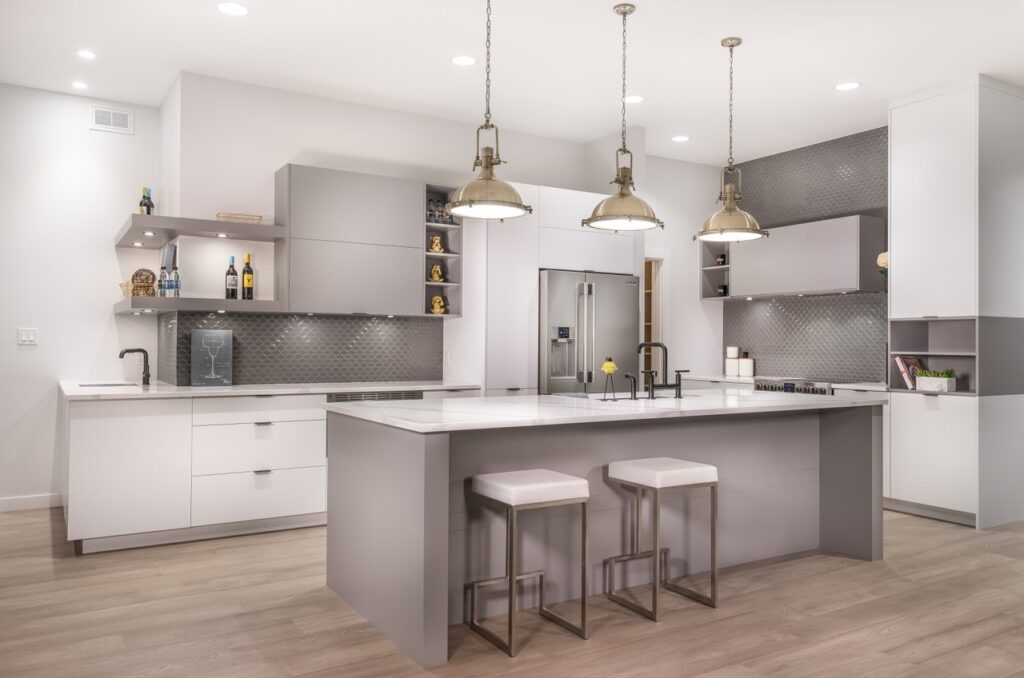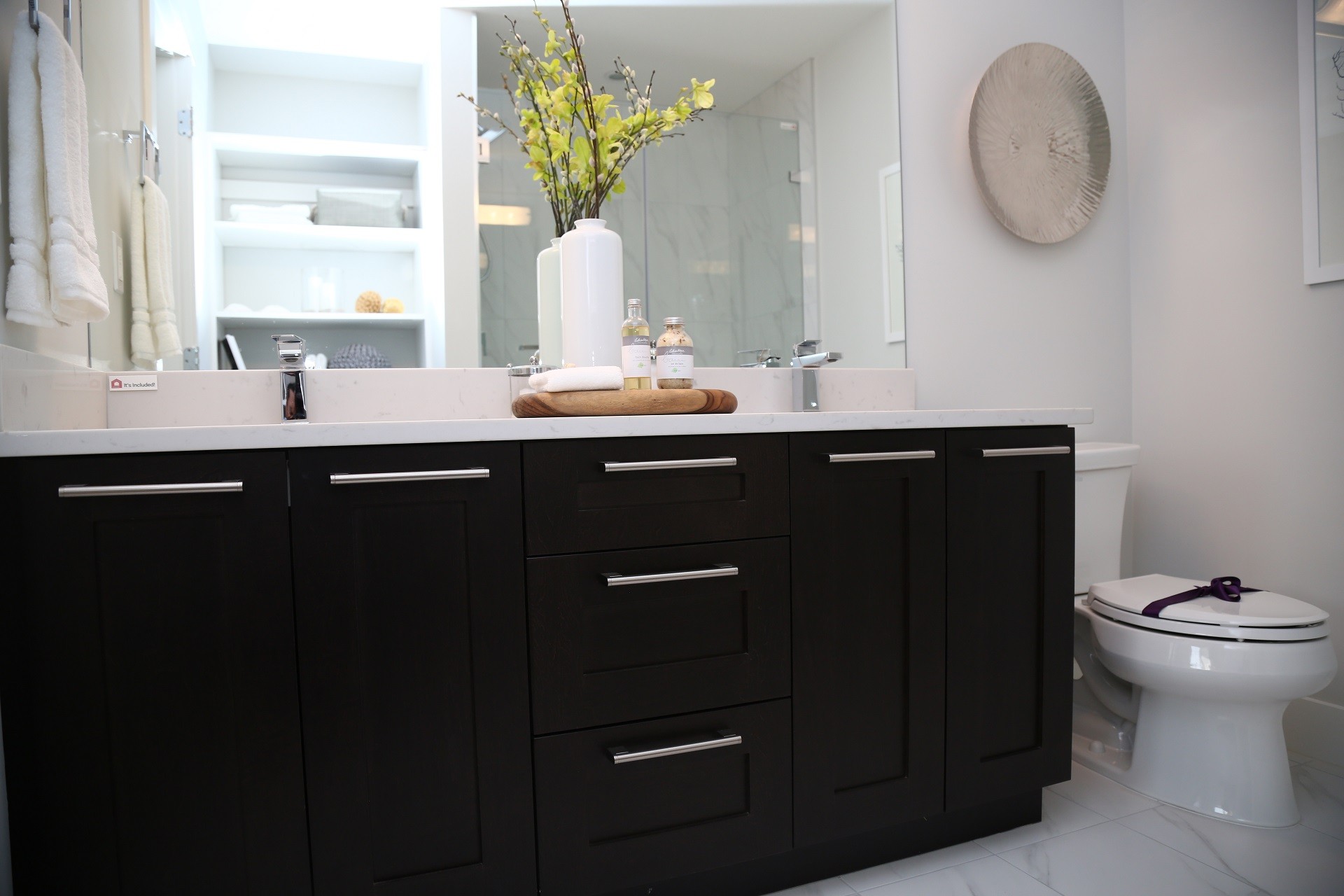Bathroom cabinet installation Winnipeg
by Admin
Posted on 11-01-2025 04:08 PM

Planning Your Bathroom Cabinet Installation
Before you begin the installation process, itâs important to plan thoroughly. This involves measuring your space, selecting the right cabinets, and preparing your tools and materials.
Measuring Your Space
Accurate measurements are crucial to ensure that your new cabinets fit perfectly. Measure the width, height, and depth of the area where you plan to install the cabinets. Don't forget to measure any obstacles like windows, doors, or plumbing fixtures. It s also a good idea to measure the distance between the floor and the bottom of the sink or vanity, as this will affect the placement of your cabinets.
Choosing the Right Cabinets
When selecting cabinets, consider the style, material, and functionality that best suit your needs. Popular materials for bathroom cabinets include wood, MDF, and laminate. Wood cabinets are durable and can withstand moisture, while MDF and laminate are more budget-friendly and come in a variety of styles. Additionally, consider the number of shelves, drawers, and other storage options you need.
Preparing Tools and Materials
Gather all the necessary tools and materials before you start. You will need a tape measure, level, screwdriver, drill, screws, wall anchors, and a stud finder. If you are installing cabinets above a sink, you may also need plumbing tools to disconnect and reconnect any pipes.
Removing Old Cabinets
If you are replacing old cabinets, you'll need to remove them first. This step is crucial to ensure a clean and smooth installation of your new cabinets.
Disconnecting Plumbing
If your old cabinets are connected to plumbing, turn off the water supply and disconnect the pipes. Use a wrench to loosen and remove the supply lines. Place a bucket or towel underneath to catch any water that may spill.
Detaching the Cabinets
Use a screwdriver to remove the screws holding the cabinets to the wall. If the cabinets are heavy, have a helper assist you in lifting them down. Be careful not to damage the walls or surrounding fixtures.
Cleaning the Wall
Once the old cabinets are removed, clean the wall thoroughly. Remove any remaining screws or anchors and patch any holes with spackle. Sand the area smooth and wipe it down with a damp cloth to ensure a clean surface for the new cabinets.
Installing New Bathroom Cabinets
With your space prepared, its time to install the new cabinets. Follow these steps for a smooth and professional installation.
Marking the Wall
Use a level and pencil to mark the positions where the cabinets will be mounted. Measure and mark the positions of the screws, ensuring they are level and evenly spaced. If you are installing multiple cabinets, mark the positions of the center lines to ensure they align.
Attaching Wall Anchors
If your walls are made of drywall, attach wall anchors to provide a secure mounting point. Drill pilot holes at the marked positions and insert the anchors. For solid walls, you can skip this step and use screws directly.
Mounting the Cabinets
Lift the cabinets into position and align them with the marks on the wall. Use a level to ensure they are perfectly horizontal. Once you are satisfied with the position, attach the cabinets to the wall using screws. If you have multiple cabinets, start with the center one and work your way out to ensure they are aligned.
Securing the Cabinets
Check the cabinets for stability and make any necessary adjustments. Tighten all screws to ensure the cabinets are securely fastened to the wall. If your cabinets are heavy or will be used to support weight, consider adding additional support brackets for extra stability.
Finishing Touches
Once the cabinets are installed, its time to add the finishing touches to complete the look of your bathroom.
Installing Hardware
Attach the handles, knobs, and hinges to the cabinets. Ensure they are positioned correctly and securely fastened. If your cabinets have glass doors, install the hinges and handles carefully to avoid damaging the glass.
Connecting Plumbing
If your cabinets are installed above a sink, reconnect the plumbing. Turn on the water supply and check for any leaks. If you notice any leaks, tighten the connections or replace the washers as needed.
Touching Up Paint
If you painted the walls or cabinets, touch up any areas that need it. Use a small brush to apply paint to the edges and corners, ensuring a smooth and even finish.
Maintenance and Care
Proper maintenance and care can extend the life of your bathroom cabinets and keep them looking their best.
Cleaning the Cabinets
Regular cleaning is essential to keep your cabinets looking new. Use a mild detergent and a soft cloth to clean the surfaces. Avoid using abrasive cleaners or harsh chemicals, as they can damage the finish.
Protecting from Moisture
Bathroom cabinets are exposed to moisture, which can cause warping and damage over time. Use a ventilation fan to reduce humidity and consider installing a moisture-resistant sealant on the cabinets.
Checking for Damage
Periodically inspect the cabinets for any signs of damage or wear. Tighten any loose screws and repair any chips or scratches to prevent further damage.
DIY vs. Professional Installation
Deciding whether to install your bathroom cabinets yourself or hire a professional is an important consideration. Each option has its pros and cons.
DIY Installation
DIY installation can be a cost-effective solution and allows you to have control over the process. However, it requires some basic carpentry skills and can be time-consuming. If you are not confident in your abilities, it may be best to seek professional help.
Professional Installation
Hiring a professional ensures a high-quality installation and can save you time and stress. Professionals have the experience and tools to handle any challenges that may arise. However, professional installation can be more expensive, so it's important to get multiple quotes and compare prices.
Common Mistakes to Avoid
Avoiding common mistakes can make your bathroom cabinet installation process smoother and more successful.
Poor Planning
Failing to measure your space accurately or not considering the layout of your bathroom can lead to cabinets that don't fit properly. Take the time to plan and measure carefully.
Using the Wrong Tools
Using the wrong tools can lead to damaged walls, cabinets, or plumbing. Ensure you have the right tools for the job and use them correctly.
Ignoring Safety Precautions
Safety should always be a top priority. Wear protective gear, such as gloves and safety glasses, and follow all safety guidelines when using tools and handling materials.
Overlooking Finishing Touches
Finishing touches, such as installing hardware and connecting plumbing, are crucial for a professional look. Don't rush through these steps or overlook their importance.
Sure, here is the edited content with the anchor text added naturally:
Choosing the Right Kitchen Cabinets for Your Home
When it comes to selecting kitchen cabinets, it's important to consider both style and functionality. Whether you're looking for modern, traditional, or custom designs, finding the right cabinets can significantly enhance the look and feel of your kitchen. For those in Winnipeg, You will need a tape measure, level, screwdriver, drill, screws, wall anchors, and a stud finder. If you are installing cabinets above a sink, you may also need plumbing tools to disconnect and reconnect any pipes. Use a level to check the position of your cabinets. Place the level on the top edge of the cabinet and adjust as needed until it is perfectly horizontal. Yes, you can install bathroom cabinets yourself if you have basic carpentry skills. However, if you are not confident in your abilities, it's best to hire a professional. If your cabinets are too heavy for the wall, consider adding additional support brackets or mounting them to studs for extra stability. Clean your bathroom cabinets regularly, at least once a week, to keep them looking their best. Use a mild detergent and a soft cloth to avoid damaging the finish. Use a ventilation fan to reduce humidity in the bathroom and consider installing a moisture-resistant sealant on the cabinets to protect them from moisture damage.FAQs
What tools do I need to install bathroom cabinets?
How do I ensure my cabinets are level?
Can I install bathroom cabinets myself?
What should I do if my cabinets are too heavy for the wall?
How often should I clean my bathroom cabinets?
What can I do to protect my cabinets from moisture?
Jaizen Design kitchen and Bath
959 Notre Dame Ave, Winnipeg MB R3E 0M8
(204) 306 8515
jaizendesign@shaw.ca
